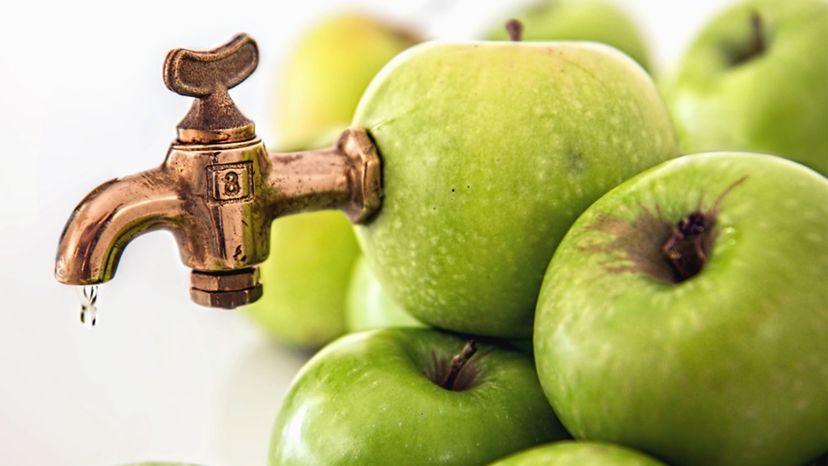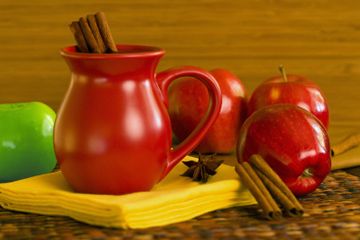
So everybody put on your thinking caps — here's a quick and easy apple beverage quiz for you:
Question 1: Which is better for you, apple juice or apple cider? Question 2: Which one often comes in juice boxes? Question 3: Which is sometimes alcoholic?
Advertisement
The answers: 1. Apple cider 2. Apple juice 3. Apple cider. I bet you did great — congratulations!
But what's the real difference between these two iconic apple beverages? You might know that one goes in a sippy cup and the other is a main ingredient in festive holiday punches, but what makes them truly different?
For starters, they're both made of apples. The main distinction comes in the processing of the fruit: Cider requires the apples be washed and then crushed, the fluid (and some pulp) squeezed out and the resulting liquid poured in a jar. It doesn't really have to be any one variety of apple, either — apple cider makers use several different types of apples to blend the sweet and tart qualities of apples in different ways. Sometimes apple cider is pasteurized — heated to kill bacteria and prolong shelf life — but it's sometimes sold raw. With unpasteurized apple cider, the natural yeasts can cause fermentation, making it slightly fizzy and, over time, alcoholic.
Apple juice, on the other hand, is almost always pasteurized, and often made of a specific blend of apple varieties. The real difference between the two beverages, though, is that apple juice goes through the extra step of filtration. You know how apple juice is always that golden color? It's because pretty much all the sediment and little solid bits have been removed. Apple juice is generally clarified by removing starch and pectin as well, and almost always pasteurized by heating to kill any bacteria that might make the juice spoil or begin to ferment.
Advertisement


